SMALL BLOCK MUGELLO 186 – 190
Arrrrrrrrr what can I say about the Mugellos and be positive? I know I’m going to end up just slagging them off, to say I’m not a fan is an understatement, but I will try to be positive if I can. Read any forum and there are those who say they are great and others don’t. There’s loads of complaint’s about lack of speed, blown pistons and are hard to jet in and others saying they have done thousands of miles with no problems!
Nearly every cylinder I see is different, there is no standardisation to any of them and there has been a few types. It’s hard to keep track and helping customers over the phone is near on impossible if they want gaskets, pistons, manifolds or heads! It’s easier to say just send in the cylinder, manifold, head and piston and we will look at it for you.
We’ve never imported these kits so have never had our ‘finger on the pulse’ as they say to make notes on alterations as they arrived from Italy.
The Mugello kits come from Tino Sacchi and his company who also make the Imola and Monza cylinder kits. Mugello as with Imola and Monza are race tracks in Italy which I think is a great way to name a series of cylinders so thumbs up there. The Mugello is the piston port version with the carb coming on the standard side. To date I think there are 4 versions, identifying each one is a nightmare as each version varies. Small block cylinders use a 64mm piston which gives 186cc which these are commonly called, why I’m not sure, all engines from day one gets the cc’s rounded up so we call them 190 kits. Some of the later kits use a 66mm piston giving 198 or 200cc. All kits can be used with a 58 or 60mm stroked crankshaft, early kits may require some extra work to use a 60mm crank later kits have the cylinder extended so no packers are required unless your using a 110mm con rod conversion.
CYLINDERS
Version 1 resembles a standard Cast Iron cylinder but as with all Mugellos they are Alloy with Nicasil plating and are not reboreable so should use graded pistons, we find you need to measure the bore and match a piston as grading is way out. The 1st cylinder used the standard 4 port design with an inlet, exhaust and two single transfer ports. Porting was increased to sort of stage 4 spec. Some I’ve set up use exactly the same porting as we recommend in our tuning sections, lets say Exhaust 170, Transfers 125, Inlet 150 degrees, near perfect. Others have mismatched porting which can be all over the place to something like Exhaust 180, Transfers 118 and Inlet 165 degrees, which will be why one engine seems great and others complain all the time about them. Inlet ports have always had a funny shape on early cylinders, it really wasn’t a good shape, it sloped downwards and became so wide the inlet skirt drops into it and knocks. Later cylinders added a bridge to support the piston. The inlet port always needs matching to a manifold and can required a lot of work to flow them correctly. The casting fins above the inlet usually fowl most inlet manifolds so need trimming/grinding to make them fit. To top it off you don’t know if the inlet port uses small or large block inlet stud spacings. Mugello inlet manifolds if you had one used a slotted hole for the small stud which means it can be fitted to small or large block stud holes, not perfect by a long shot but it works but inlet port matching is again not standardised!
Transfer ports are wider in the cylinder bore than a standard and again this is where power is lowered as the feeds from the casing are thin, not only are they thin but early cylinders don’t match casings and some where exposed to air at the base gasket when bolted down! Part of the problem with power with these cylinders is the transfer design which looses the pumping effect and doesn’t flow. Do a cast cylinder with the same port timings and standard width transfers in the bore and the cylinder works much better. Bridging the transfer port entries like a TS1 would improve the older cylinders which can only be done by iron lining the bore and indeed later Mugello’s got this treatment and later cylinders have 4 transfers like a TS1.
Later versions added a boost port above the inlet port and the piston came modified with a slit below the rings to open up this new 3rd transfer port. I say SLIT as the area from the top of the inlet port and start of the boost port is so thin it has to be a slit and not a proper feed hole. It is so close that if you set up the cylinder incorrectly the slit hole will open up direct into the inlet port causing poor starting and running.
The exhaust port has been moved all over the place. Early cylinders had the standard thickness and exhausts fitted fine, later cylinders for some reason that I’ve never sussed out thickens the flange area so an exhaust is 10mm towards the floor miss aligning exhausts! All I can think it gave more material for longer studs and strength where the early cylinders failed by been alloy with no depth. Not only was the flange longer but the port was offset and ideally needed matching to an exhaust. We offer a service to machine down the flange to standard and match the exhaust port correctly.
Later cylinders beefed up the transfer feeds so these can be made massive, you can do a stage 6 version easily which in race terms can improve the wider transfer feeds in the bore. The latest version has gone even further with a bridged inlet port with a boost port, thicker transfer feeds and now with bridged transfers in the bore.
As a tuner I have come across many cylinders with poor plating on the bore, it shows up when you start to tune and reshape ports. I’ve known plating to become loose as you cut into it and you can peel it all off in one piece needing a replate from new! Most cylinders are poorly cast to look at, they are very rough in appearance both on the outside and inside of the ports. Externally it’s fine it aids cooling, inside the ports ideally even standards need a tweak.
I’ve also known some cylinders to be very porous with small holes, where the casting process is incorrect.
These cylinders are so weak in the casting alloy and I’ve known cylinders to give – once assembled and heads constantly come loose on one side and repeatably blow again and again. From new the only cure is an Iron Liner to add compression strength once tightened up, but even this doesn’t help as the base face of the cylinder also crushes up. To be honest working with the older cylinders is a waste of time and you can spend better money else where.
HEADS
Early cylinders used the normal bolting the head to the cylinder method just like Innocenti. Head misalignment is always a problem with this design, later Mugellos addressed this problem by machining the head and cylinder where the studs are and using dowels to align the head, but even with the dowels fitted the head was machined offset! So what was the point? The idea sounds good but there is another problem with this method, the area from the cylinder bore to a cylinder stud is too small and only weakens the already problem of head gasket failure as with all Lambretta cylinders. For these cylinders special head gaskets were available with holes to suit the dowels, all very oddball. Later cylinders added 3 more extra stud holes like our RT cylinders except we managed 4 making a total of 8 areas where the head is tightened. The latest cylinders have been extended and the head is dropped into the bore again same as our RT kits. We use a good drop making location easy, these hardly have a drop so its possible to catch and cross over the head joints. By doing this the top of the cylinder is now stronger.
Heads have changed many times over the years from not supplying one and needing one doing separately, to heads supplied with too high a compression ratio and holed pistons, to heads supplied with too low a compression ratio and lack of speed and with some about right. Then heads where made and matched on later cylinders with a center combustion chamber with a standard off set plug, which I’m not a fan of. I would prefer the plug central to the combustion chamber or the plug offset with the combustion chamber as per standard. We have dynoed all types and have found the standard offset type is always the best. Some of these later heads are machined to suit the extra bolt holes, some were not and the very latest are dropped into the bore or more like just dropped in the gasket area.
The latest heads with the extra 3-4 mounting bolts and center combustion chamber has the spark plug coming from the standard side – they can not even get this right and everyone I’ve seen doesn’t have the machining correct for the spark plug. When the plug is fitted there is a long straight drilled section where the plug is hidden deep in the hole – not a good design and something we see on other head designs. These heads need cutting back in this area to expose the tip of the spark plug so it’s in the combustion chamber and not down a hole with sharp machining edges which can cause ignition problems.
It’s the head which cause the most problems with Mugello kits. We’ve seen so many Mugello’s set up on lots of dynos only to have them blow up through too high compression, after the 3rd blow up they bring the kit in to check it over and it was the head every time, totally missed on 3 different dyno sessions. So if in doubt GET THE HEAD CHECKED by a professional!
Whilst we are on with dyno’s when we had two dynos running back to back, one would have a Mugello kit with 30mm and expansion and would regularly show only 12 – 14bhp, on the other dyno we would run a RT, SIL or something similar with the same carb and exhaust and they always beat the Mugellos even with a standard SIL cylinder showing just how under powered the Mugello’s really are.
PISTONS
Pistons have altered again over it’s production run and has pegs moved and the slit port added making after sales very difficult indeed, it’s this lack of standardisation which I don’t like about these kits that’s why MB has tried to make life easier for customers by standardising our own products. All pistons use the wrong dome height compared to the Lambretta domes so heads need re cutting to suit.
TUNING AND MODIFICATIONS FROM MB
There are three areas to look at to improve the Mugello cylinders………….. some cylinders we will work on and others we won’t.
- Porting work and matching to flanges
- Cylinder heads, squish clearance and compression ratio
- Piston designs
As with all cylinders, who ever makes them some clever person can always find a little area to modify and improve it. The thing with the Mugello is every aspect can be modified to improve it so there is a lot which can be done especially on the earlier kits. The hard part as explained is sussing out the cylinder version, cylinder heights and setting up the port timings then make a head to suit the cylinder, each cylinder should be considered a ONE OFF job. Don’t listen to the forums because you just don’t know if you are comparing like for like.
- First job is to match an inlet manifold to the inlet port, whatever the manifold is, it will need matching and will possibly need the casting of the cylinder and manifold altering to suit. Exhaust ports need looking at to suit the flange been used.
- Cylinder heads, these always need checking, then they also need altering to suit the bolt down method used by the cylinder. It could be a case of mismatching heads and designs to make for a better set up. For instance using a doweled cylinder you could use a normal head and do away with the dowels which are only trouble. Get the compression correct and look at the squish clearance issues. Sometimes it would just be a case of altering the combustion area to make the compression safe for our modern fuels or it maybe a case of supplying a totally new head.
- Porting can be improved, it’s a case of first checking port timings. When the cylinders are machined in the factory they are machined differently top and bottom this will alter port timings. Machined incorrectly in one plain and the Inlet port will be to big, the transfers will be too small and the exhaust port maybe perfect. Done another way and all ports maybe ok, done the opposite way and you could have a good inlet timing, good transfer timing and then have a large exhaust port. From my point of view it’s a case of stick the cylinder on a port timing jig look at inlet, exhaust and transfer timings and work out what to do – to improve it. This may involve needing a cylinder packer to lift the cylinder and it may involve machining the top of the cylinder or machining the head to drop into the bore or have a recess in the head. It may be that the transfers need grinding to increase port timings as these can be low but the inlet and exhaust maybe be ok. And as with all piston ported cylinders it would also be an advantage to do our MB Shorty Reed Valve conversion, by doing this it doesn’t matter if the inlet or exhaust port timings are too big, it would be a case of doing a Reed tune and get transfers to somewhere workable.
- We make special pistons which should suit most kits, we even make short crown height pistons so a long rod can be used with the kit. But as explained some have a boost port and some rings can fowl in these bores so it’s always worth supplying the old piston which came with the kit to check out peg spacings and to see if the slot is correct.
Ok so I’m not a fan of the Mugello and I’m sure people will disagree with how I am about the kit, but we can alter them in many ways to improve them. You may think you have a good kit, go on one modified to a MB Touring Torquey Tune and these kits can nearly double in bhp. But it’s not just raising the the bhp it’s about making a kit work low down and respond throughout the throttle range.
- Tune, match inlet manifold and flow
- Stage 5 tune
- 190 Cylinder head
- Forged piston kit
- Forged piston kit
- Prepare a cylinder for Ceramic plating
- Ceramic plate to repair a worn or damaged bore
- Iron liner to repair a badly damaged bore
- Reed valve tuning to cylinder
- 6 petal 30mm Dellorto reed valve assembly
- Li185 chrome legshield badge
- Li190 chrome legshield badge
- Grand Prix 185 legshield badge
- Grand Prix 190 legshield badge
- X185 chrome legshield badge
- Tv185 chrome legshield badge
We offer over sized 64.5, 65, 65.5 and 66mm pistons to bore out a cylinder to either repair damage or to gain cc’s in both standard and Tv compression heights
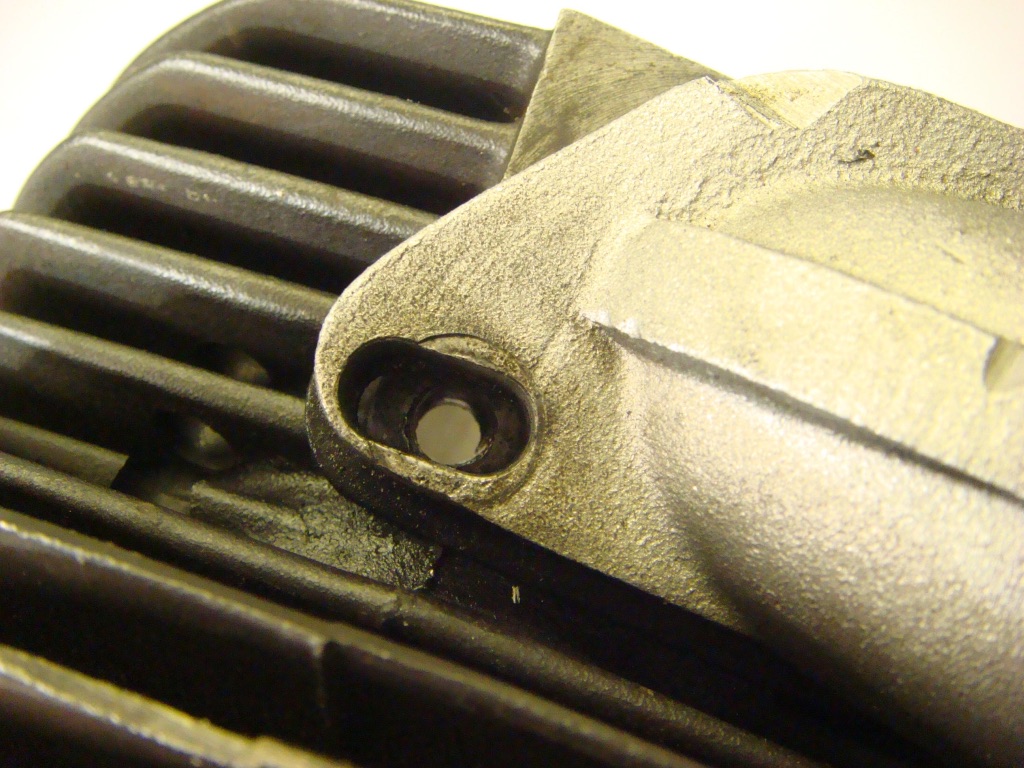
Not the best way to make manifolds with a slot for large and small block fitting
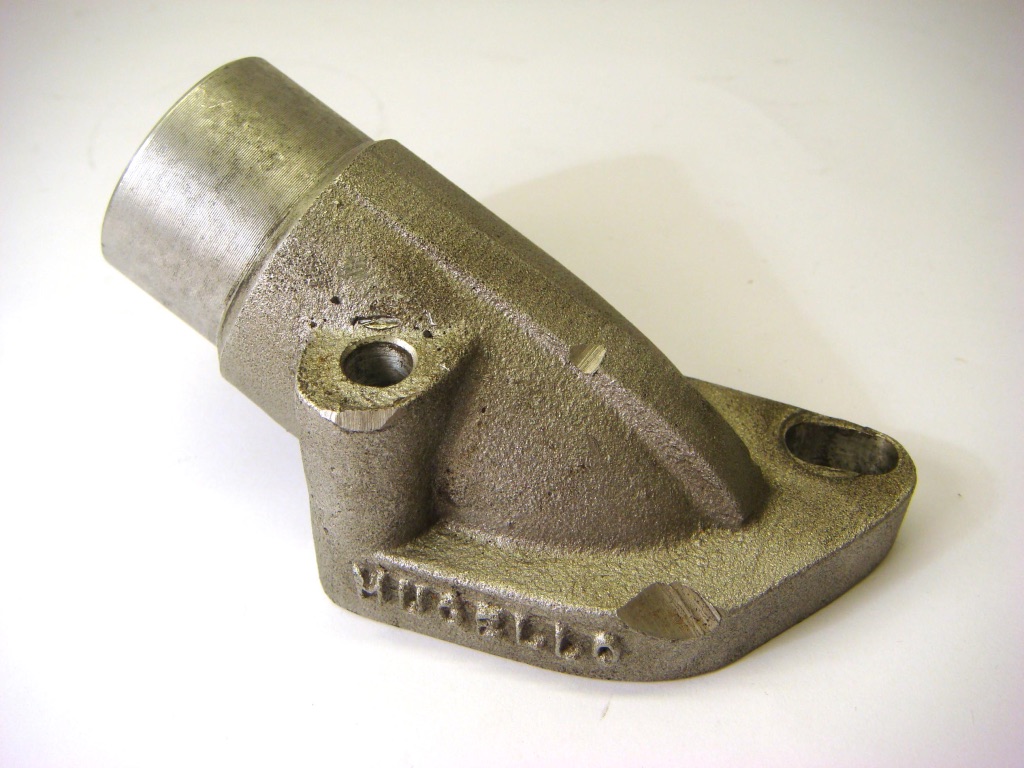
The slotted Mugello inlet manifold fits small and large block cylinders but a good idea is limited as the manifold port does not always match a inlet port
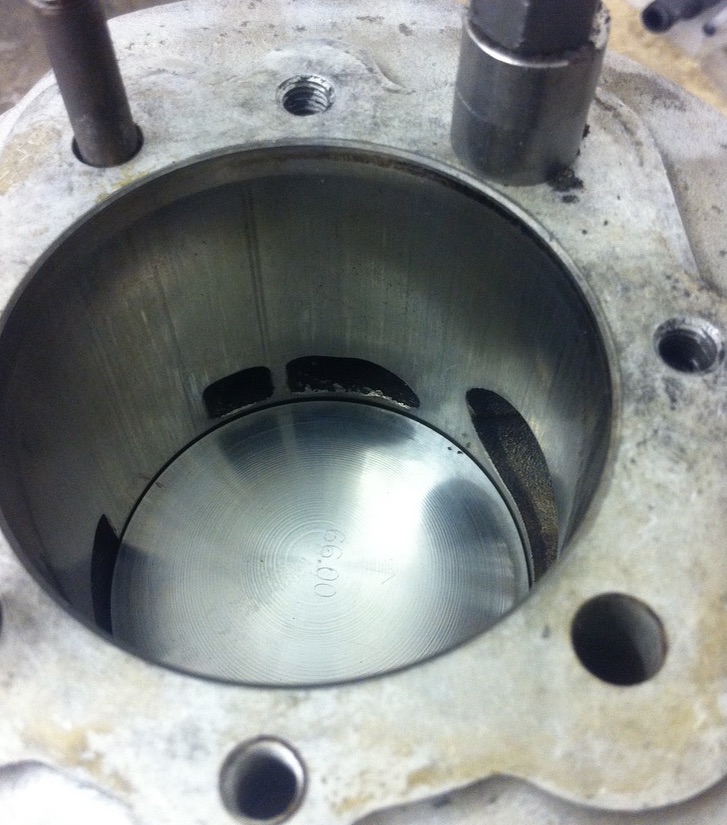
Later cylinders showing the split transfer feeds into the cylinder and the extra 7mm bolt holes to secure the head. Showing how poor the machining work is, note the exhaust port and transfers ports are not level at BDC

All Mugello castings are rough ST – Sacchi Tino
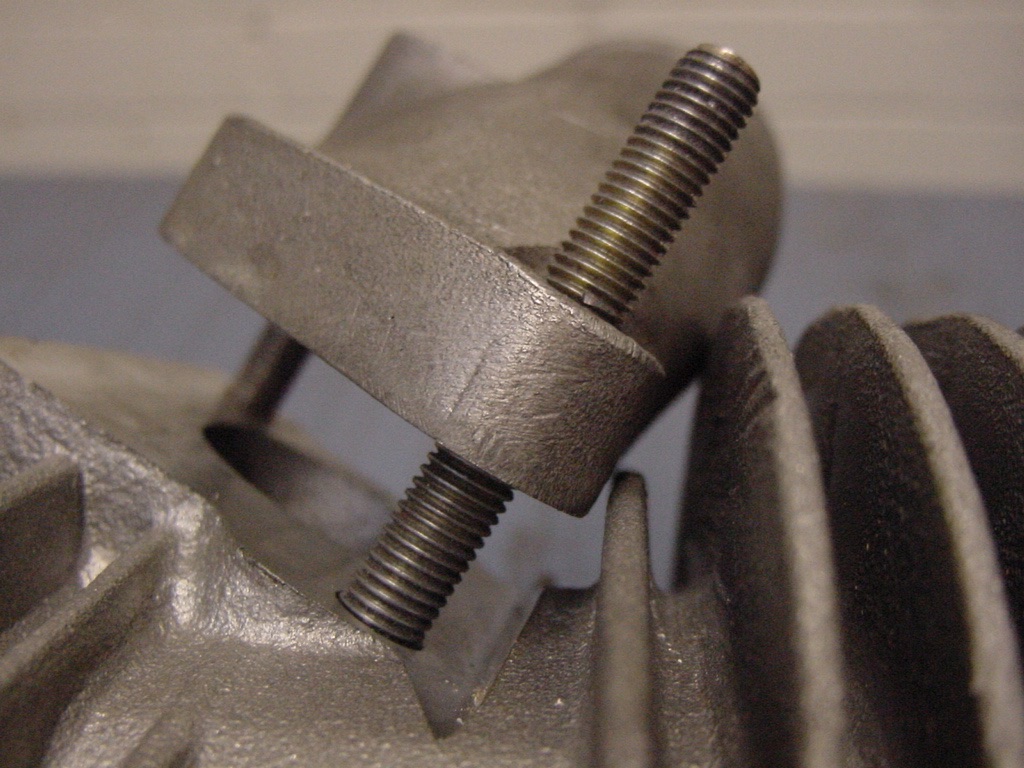
Always check the inlet manifold fits
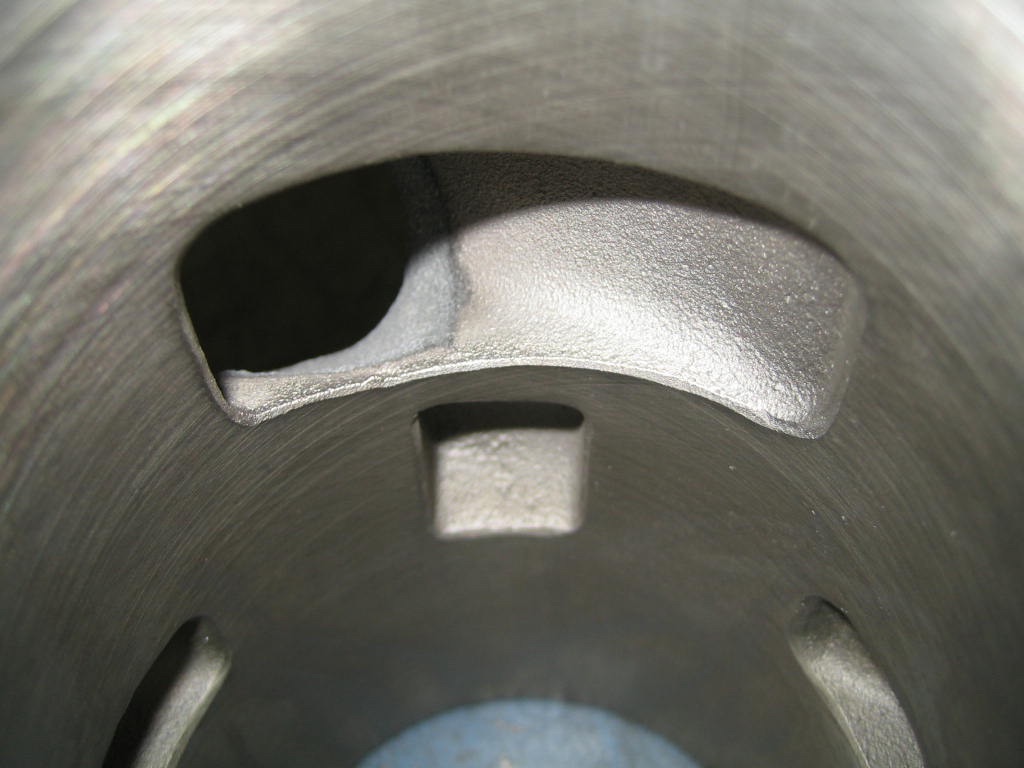
Wide inlet port and small boost port above it
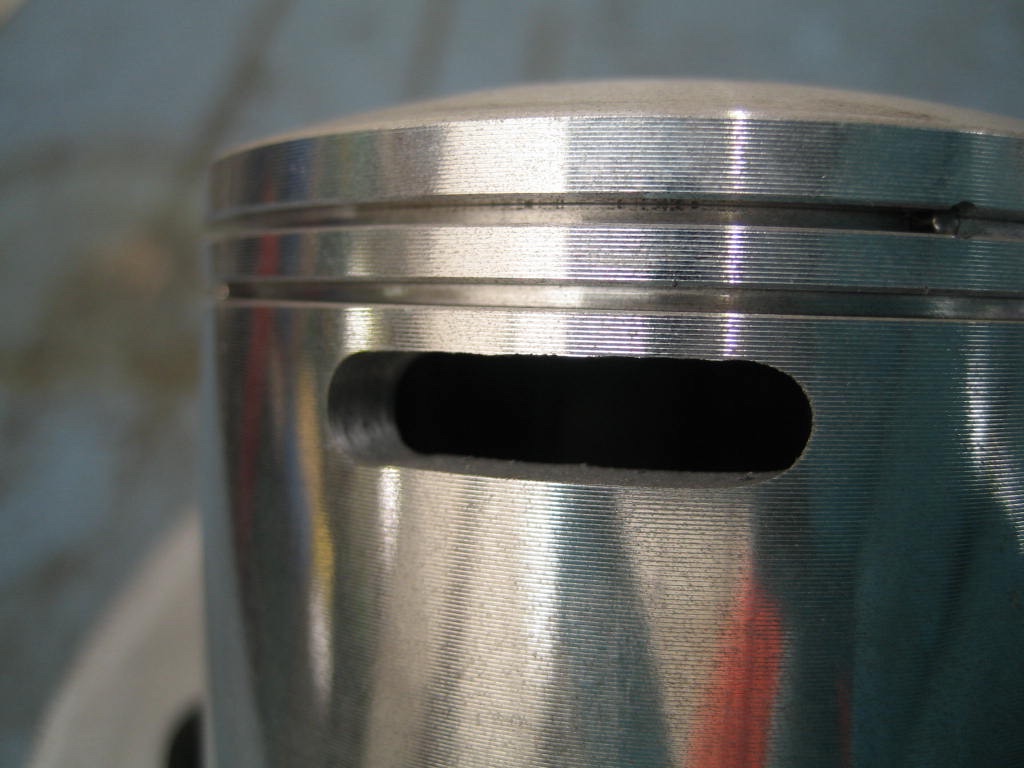
And the slit/port to let gases through into the port from the crankcase

Not only really rough casting work inside the ports but one set up where the slit is exposed
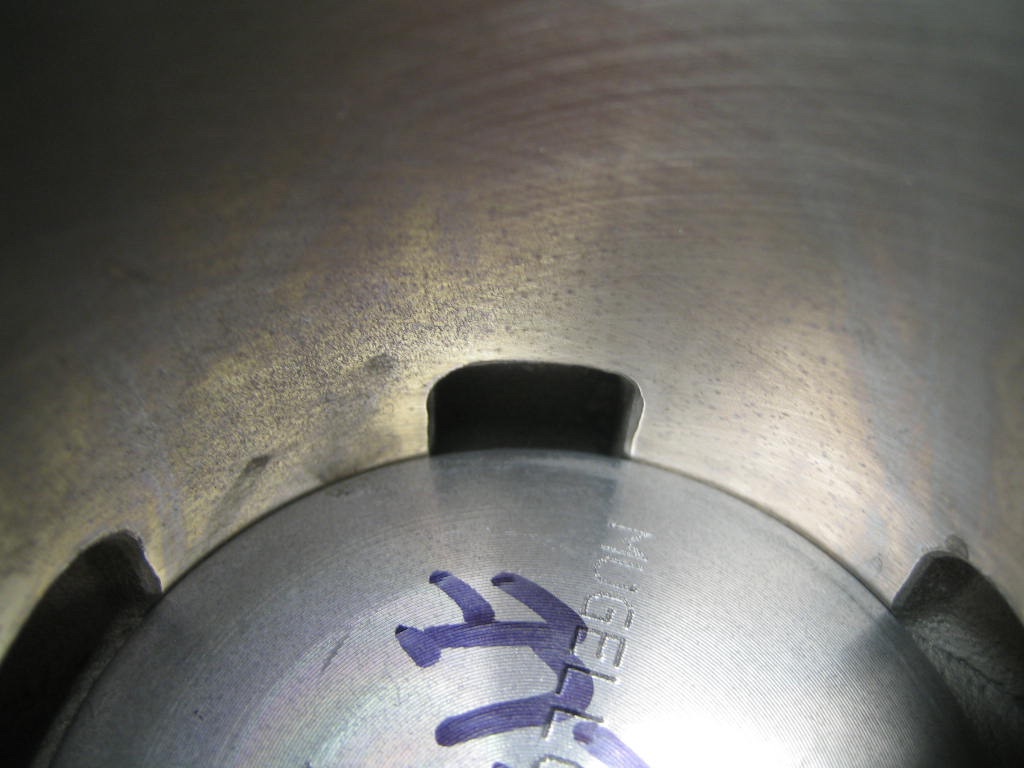
Version 3 I think with the new boost port above the inlet port. Two transfer ports and a central boost port, note the little holes in the plating, poor castings there
Mark Broadhurst, if you have any questions please email mark@mbscooters.co.uk








